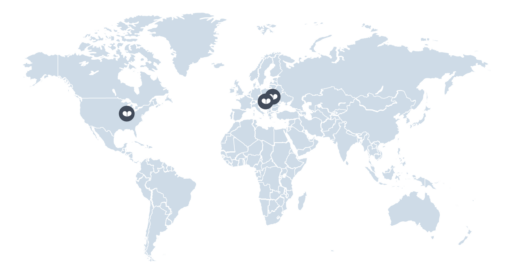When the pandemic was just a whisper in the air, H-E-B, a supermarket chain based in San Antonio, Texas, already had a plan. The company didn’t know how chaotic the situation would, or could, get. Still, it was able to cope with the virus with more composure than most companies in the US and abroad.
Was it Clairvoyance? Luck? Pure coincidence?
None of the above.
H-E-B used scenario planning – a technique that allows companies to anticipate the future and prepare for the unknown. More than a simple contingency plan, scenario planning gives organizations of all shapes and sizes the ability to visualize and find solutions to multiple “what ifs.”
Of course, no one can predict what tomorrow will bring. But scenario planning may be the closest thing we have to foresee the future. Indeed, scenario planning will help your company move into the unknown with less doubt and help you make challenging decisions with more confidence.
In this post, we’ll cover:
- Scenario planning types
- Which scenario planning should you use
- How to effectively use scenario planning
- Potential scenario planning outcomes

You can use different types of scenario planning to anticipate the future. One isn’t better than another. It depends on your company, its current state, and what you want to achieve.
Normative scenarios
Use this scenario to plan for a preferred end state. Its purpose is to redefine your goals and visualize where your company would like to be in the future. Using a normative scenario, you’ll better understand your company’s vision. It focuses more on internal factors and less on how external forces can affect your company. Normative scenario planning is often used in conjunction with other scenarios to better grasp how changes in the industry can affect a company.
Operational scenarios
Used to anticipate what the future could be in the short or long term, operational scenarios are the most popular. You can use this scenario to prepare for a significant shift in your industry’s landscape. It’s also the one you want to roleplay how your company would respond to a national or global catastrophe. A question you could try to answer might be, “How do we respond if a serious earthquake were to occur?” Or, “What happens if two of our competitors merge?”
Quantitative scenarios
Popular in investment banking, quantitative scenarios are financial models. You can use them to forecast ROI, market share, revenue projection, and other financial scenarios. They’re instrumental when two independent companies merge. It’s a way to calculate what each entity will bring to the table using hard numbers and anticipate the financial status resulting from the merge.
Strategic Management scenarios
Used by private companies, military forces, and government agencies, strategic management scenarios focus on external forces that a company cannot control. This scenario is not concerned with a company’s operational structure or industry. Its purpose is to create stories that deal with drastic changes in consumer behavior and events that could make a product obsolete. For example, a scooter manufacturer may ask, “what if electric scooters start to outperform our gas-powered ones?”
Which scenario planning should you use?
This depends on what you’re trying to achieve and how long a company has been in business. A startup, for example, would benefit from normative scenario planning to help it define its long-term vision and set attainable goals.
Organizational scenarios are helpful for companies looking to prepare themselves for possible changes that may affect their industry. It’s the type of scenario most companies invest in since it gives them a chance to anticipate the future more confidently.
These two scenarios can be combined. It’s a way to deep dive into your company’s goals and helps you plan for unexpected situations.

While there are various scenario planning types to choose from, they’re all carried out similarly.
1. Define the forces that could impact your company
Your scenario planning team should begin with a STEEPLE analysis to consider the external forces surrounding your industry. The analysis will open your mind to factors you typically never consider. The acronym stands for:
S – social
T – technological
E – economic
E – environmental
P – political
L – legal
E – Ethical
This is one of the most thorough analyses you can use to cover a wide range of possible situations.
2. Explore the most urgent incertitudes
Once you’ve completed your STEEPLE analysis, you should select the problems you believe are most urgent. Your team should eliminate the most improbable situations and pinpoint the ones that could most affect your company.
Trust the data you gathered from the STEEPLE analysis to guide you in this process. It’s the key to finding gaps in your business model.
3. Brainstorm plausible scenarios
Now that you know your company’s vulnerabilities, it’s time to attach possible scenarios to them. Let’s imagine that a SaaS company’s biggest fear is that a competitor will release a revolutionary technology. The company should come up with plausible scenarios and come up with ways it could respond to such a threat.
4. Write and play out your scenarios
Once the brainstorming is done, you’ll want to create your scenarios in story form. It’s the best way to play out your scenarios.
If we take H-E-B as an example, one of their scenarios may have looked like this:
- A dangerous virus is spreading worldwide
- It forces governments to close their borders
- People are forced to stay home
- People panic and want to stock up on essential goods
How do we respond?
- We extend our sick leave policy in case our staff is infected
- We raise our staff’s pay because coming to work is high-risk
- We open a COVID hotline to keep our staff and consumers informed
- We reduce the number of essential goods each person can purchase to control the supply
5. Analyze and track
Creating scenarios is only half the work. Once your scenarios are in place, you must monitor the external forces that could affect your company. This is the only way to discover early signs of a major shift in your industry’s landscape. Indeed, to foresee what is to come, you must invest time in analyzing how the world is moving.
Potential Outcomes of Scenario Planning
A well-conducted scenario plan can benefit your company in more ways than one.
Some of those benefits include:
- Help stakeholders in their decision-making process
- Give every department a plan of action for when a scenario unfolds
- Improve a company’s forecasting abilities
- Propose solutions when a problem occurs
- Help see early signs of a particular situation
Last thoughts
The future is an unknown that humankind will forever try to foresee. However, no crystal balls can divulge what tomorrow will bring. Scenario planning isn’t a full-proof future-gazing tool, but it remains the best method to prepare for what’s to come.
To help you simulate your scenarios and track changes at a glance, use MARMIND’s scenario planning functions. It will allow you to bring your scenarios to life on one centralized platform and empower you to anticipate the future more confidently.
Author

Peter Fechter
Peter is Digital Marketing Manager at MARMIND and mainly responsible for website and lead management. When he's not busy creating content, he is developing new strategic approaches for campaign planning.










